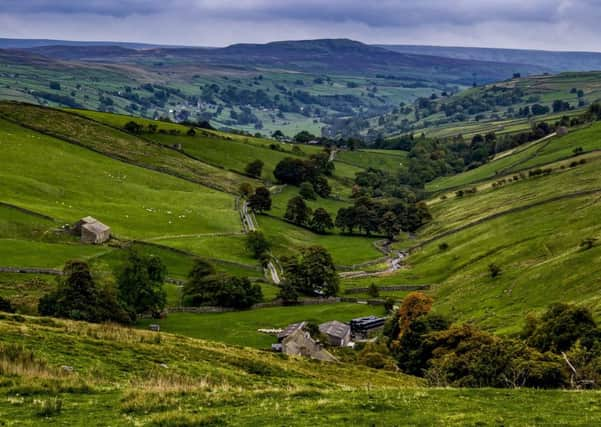Andrew Vine: Yorkshire's rural generation gap that turns communities grey


It is a gradual hollowing-out of small towns and villages as young people move away, sapping them of energy and vibrancy and leaving behind ageing populations increasingly reliant on health care and social services.
A few days ago, on market day in Thirsk, it was noticeable that most of the shoppers were pensioners. I mentioned in passing to one of the stallholders that he must do a good trade out of older people.
Advertisement
Hide AdAdvertisement
Hide Ad“It’s all pensioners round here,” he replied. A generalisation to be sure, but there is more than a grain of truth in it, and not just in Thirsk.
Visit any of our traditional market towns, and the picture is identical. An overwhelmingly older population.
It’s the same at the coast. A friend who lives in Bridlington realised recently that he and his wife were the last people on their street who are still working. Every other resident is retired, several having moved there from West or South Yorkshire when they stopped work.
Who can blame them? After a lifetime of hard work in the cities, a retirement to a smaller, quieter, possibly more friendly town, or to the coast, is an enticing prospect.
Advertisement
Hide AdAdvertisement
Hide AdBut this is storing up problems for the future, both economically and socially, as a report last week from a think-tank, Centre for Towns, pointed out.
It found that small towns and villages over the past three decades lost more than a million young people, as they moved to the cities in search of work. Over the same period, there was an influx of more than two million people aged 65 and over into the smaller places.
The trend was particularly pronounced in the North. Cast an eye at any of Yorkshire’s market towns, and the accuracy of the research is plain to see.
This is creating an imbalance in the population as the pool of people of working age shrinks. Yet next to nothing is being done about it, even though in the longer term it jeopardises the busy, thriving qualities that attracted people to move there in the first place.
Advertisement
Hide AdAdvertisement
Hide AdYesterday’s launch of the Government’s Industrial Strategy had its focus firmly on the big cities. They are the engines of the economy, and will receive the greatest attention – and funding.
If the Government ever springs sufficient money to enable the Northern Powerhouse concept to become the great driver of growth and employment that it could be, even more emphasis will be placed on cities.
But what happens to the smaller towns, or the villages? This is an issue that has particular resonance in North and East Yorkshire, both inland and on the coast.
If the young continue to move away, it will drain the lifeblood out of once-thriving communities. Older people on fixed incomes cannot fuel local economies as effectively as those developing careers and increasing their spending power as the years pass and they get better jobs.
Advertisement
Hide AdAdvertisement
Hide AdGradually, shops and businesses will close as their owners retire and there is a dearth of people to take them over.
Deprivation in rural areas is already a problem, and a long, slow economic decline as wealth is concentrated in cities can only make matters worse.
Meanwhile, as residents age, they will inevitably place more demands on the NHS and social care. These services are already under pressure in the countryside, not least because populations are spread across wider areas than in the cities.
The changing age profile of smaller communities is also being aggravated by the high house prices in many rural areas. Young people who would like to continue living in the villages where they grew up are finding it impossible to do so because they cannot afford to buy.
Advertisement
Hide AdAdvertisement
Hide AdBut it isn’t just about economic factors. It’s also about maintaining the social health of smaller places. A mix of age groups is a healthy thing, as generations live side-by-side, helping each other and gaining mutual benefit from exchanging the wisdom of age with the ideas and energy of youth.
The Government needs to wake up to the generational divide that is growing in too many places. That means taking steps to ensure smaller communities have more to offer young people setting out on a career.
It also means a greater recognition and acknowledgement of the needs of rural areas, which has been a notorious blind spot for both Labour and Conservative governments for generations.
Vastly improved rural broadband is one key element, so that businesses have a chance to compete with rivals based in cities. So is giving smaller places a fairer share of funding to encourage investment and job creation.
It’s in nobody’s interest – not least that of older people – to allow villages and market towns to drift into becoming essentially retirement communities.